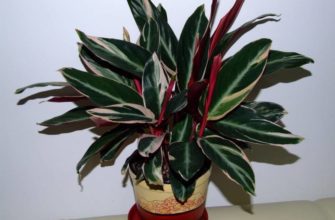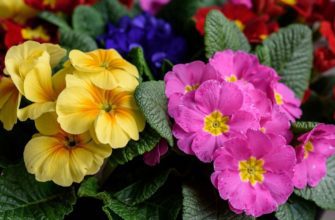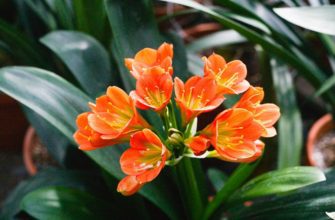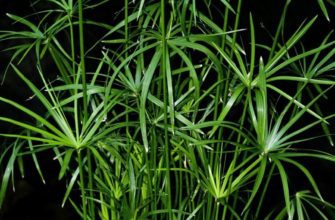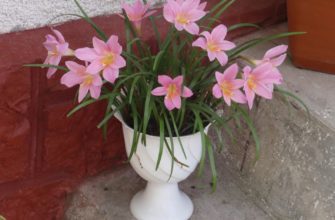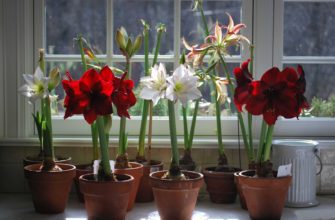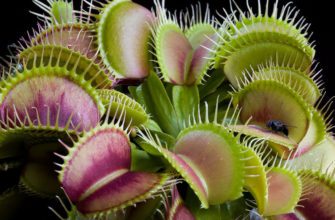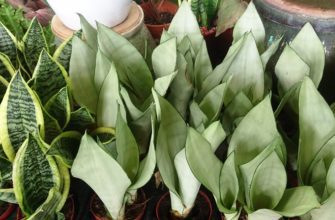Chamaedorea is not only an impressive houseplant, but also one of the most popular members of the palm family. Its graceful leaves and elegant structure make it a desirable element of many home interiors. While many appreciate it for its decorative qualities, not everyone knows about the variety of Chamaedorea species and how spectacular its flowering can be. In this article, we will dive into the amazing world of Chamaedorea, its species and care features, so that you can enjoy the beauty of this plant to the fullest.
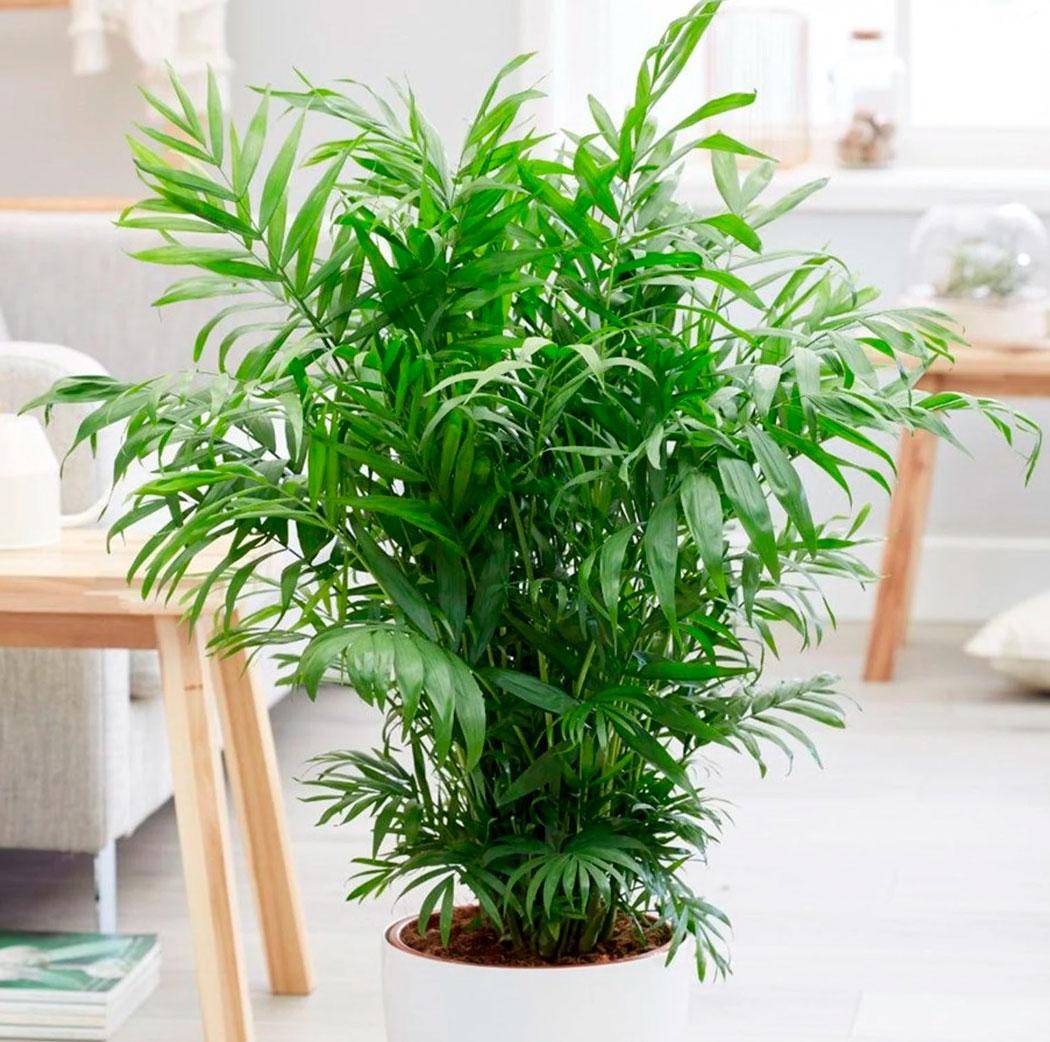
General characteristics of Chamaedorea
Chamaedorea is a popular indoor plant from the palm family that attracts attention with its graceful, feathery leaves and compact growth. It is an ideal choice for those who want to add a tropical element to their home or office decor, but do not have a large space to accommodate the plant.
Main characteristics of Chamaedorea:
- Origin: This palm tree is native to the tropical and subtropical regions of Central and South America.
- Appearance: Chamaedorea usually has several stems growing from one root system. The leaves are pinnate, green, often with a slight sheen.
- Height: At home, the growth of chamedorea is usually limited to a height of 1-3 meters, depending on the conditions of maintenance and care.
- Bloom: Although flowering at home is a rare occurrence, under certain conditions, chamedorea can delight with small yellow-white or greenish flowers.
- Care: Chamaedorea is considered one of the more unpretentious types of palms. It requires moderate watering, a well-lit place without direct sunlight and moderate air humidity.
- Adaptability: This plant is well adapted to indoor life and can tolerate some shade, but prefers bright, filtered light.
- Perenniality: With proper care, chamedorea can delight you with its splendor for many years.
Overall, Chamaedorea is a great choice for tropical plant lovers looking for an easy-to-grow, elegant addition to their home.
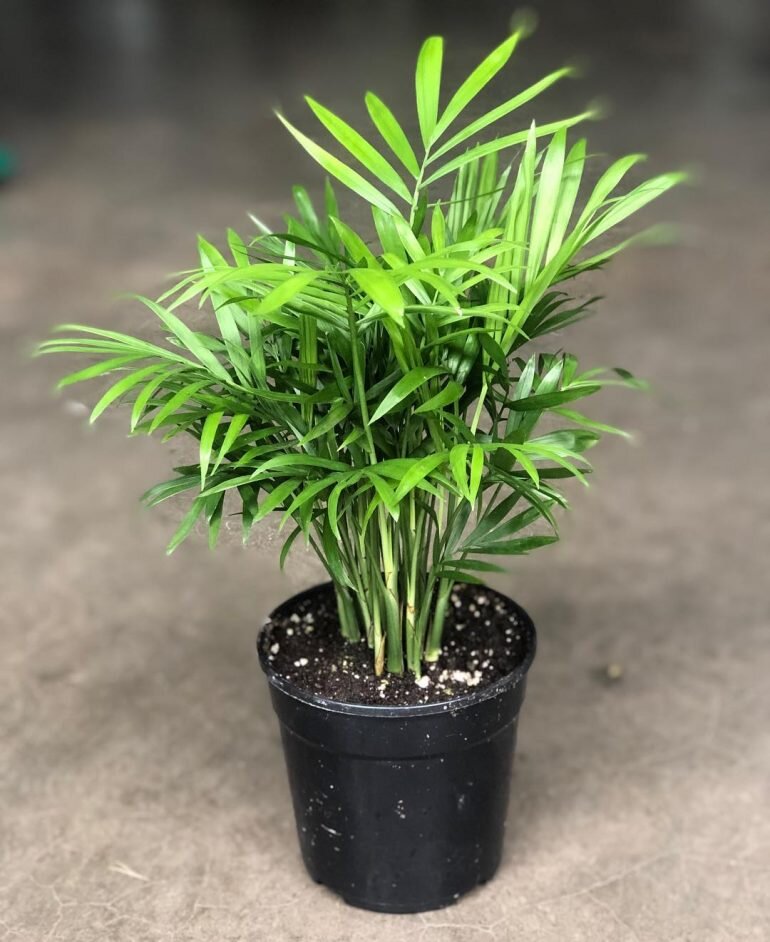
Chamaedorea elegans: features and characteristics
Chamaedorea elegans, also known as the bamboo palm, is one of the most popular and graceful members of the palm family. Its lightness and gracefulness make it a welcome addition to any home. Let's take a look at the main features and characteristics of this palm:
- Trunk: One of the visual characteristics is the multiple thin bamboo-like trunks that grow from a single rhizome. These trunks are usually greenish-gray in color.
- Leaves: The leaves are pinnate, long, dark green, fan-shaped, giving the plant lightness and airiness.
- Height: Chamaedorea elegans is a slow-growing plant. In home conditions, its height usually reaches 1.5-3 meters.
- Bloom: Under optimal conditions, the Chamaedorea can flower, producing small yellowish or greenish flowers that then turn into small black fruits.
- Origin: Its homeland is the warm tropical forests of Central America.
- Conditions of detention: Prefers a bright, diffused light place, moderate watering and high humidity. It is better to avoid direct sunlight, which can cause burns on the leaves.
- Advantages: This palm tree is also known for its air purifying properties, helping to improve the indoor microclimate.
- Stability: Chamaedorea elegans is quite resistant to various environmental conditions and can feel good in both warm and cooler rooms.
In conclusion, Chamaedorea elegans is not only a beautiful ornamental plant, but also an incredibly adaptable and useful home "helper", ideal for creating a tropical atmosphere in your home or office.
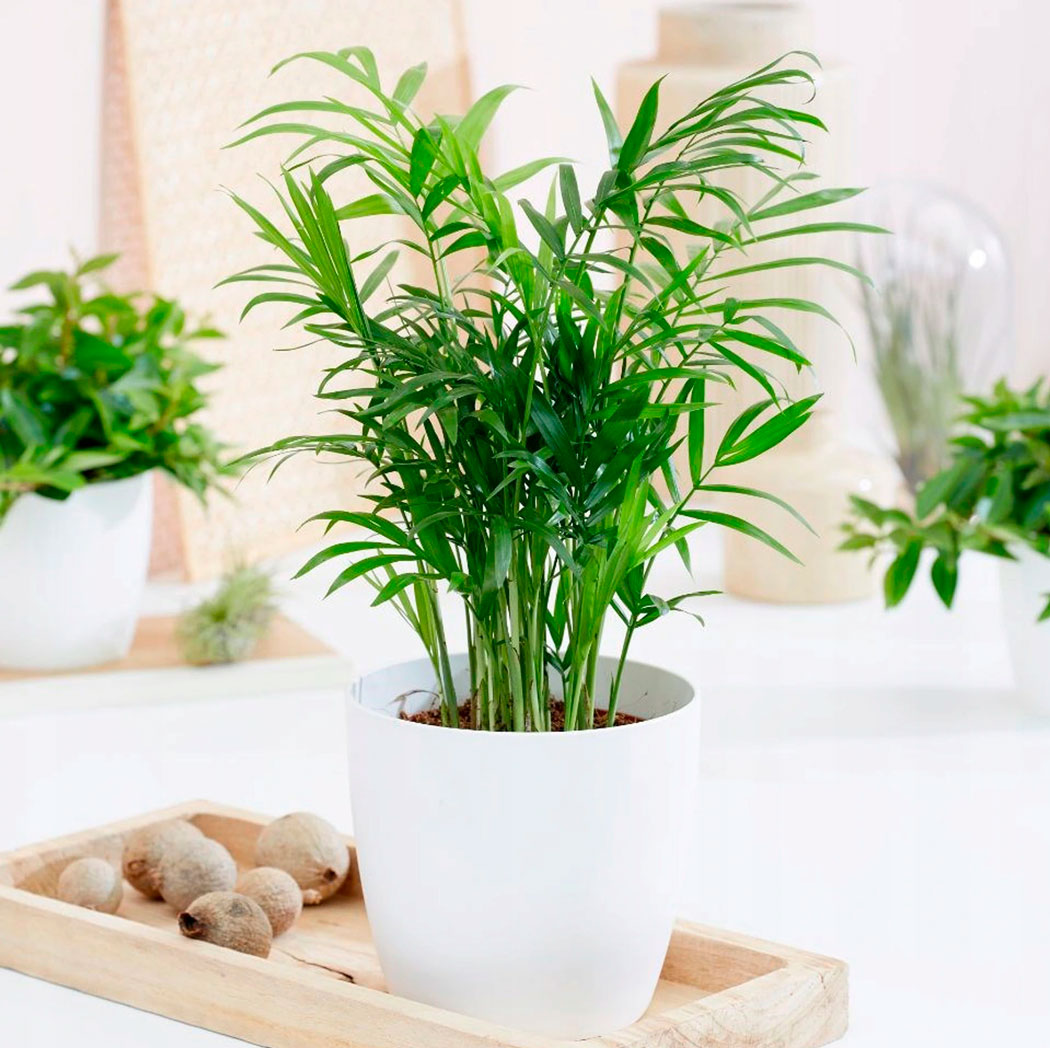
Chamaedorea blooming
The flowering of the Chamaedorea is a special moment in the life of this palm, which is not always possible to see at home. Understanding this process can help indoor plant lovers take better care of their Chamaedorea and perhaps witness this amazing natural phenomenon.
- Appearance: Chamaedorea flowers are small, usually yellowish or greenish, collected in dense inflorescences. Sometimes they can look more like bunches than individual flowers.
- Flowering time: In the wild, chamedorea blooms regularly, but in home conditions this is a rare phenomenon. This can happen at a mature age of the plant, provided that it is properly cared for.
- Fruit: After flowering, small fruits – berries – may form in place of the flowers. They are usually black or dark blue in color and contain seeds.
- Conditions for stimulation: To stimulate flowering, it is important to provide the chamedorea with sufficient light, proper watering and fertilization, and also to provide it with a dormant period.
- Importance: Although the Chamaedorea bloom is not as spectacular as some other plants, it is always a nice bonus for gardeners, indicating that the plant is doing well and is developing properly.
In conclusion, although flowering of Chamaedorea at home is a rare phenomenon, proper care can increase the chances of witnessing this interesting process.
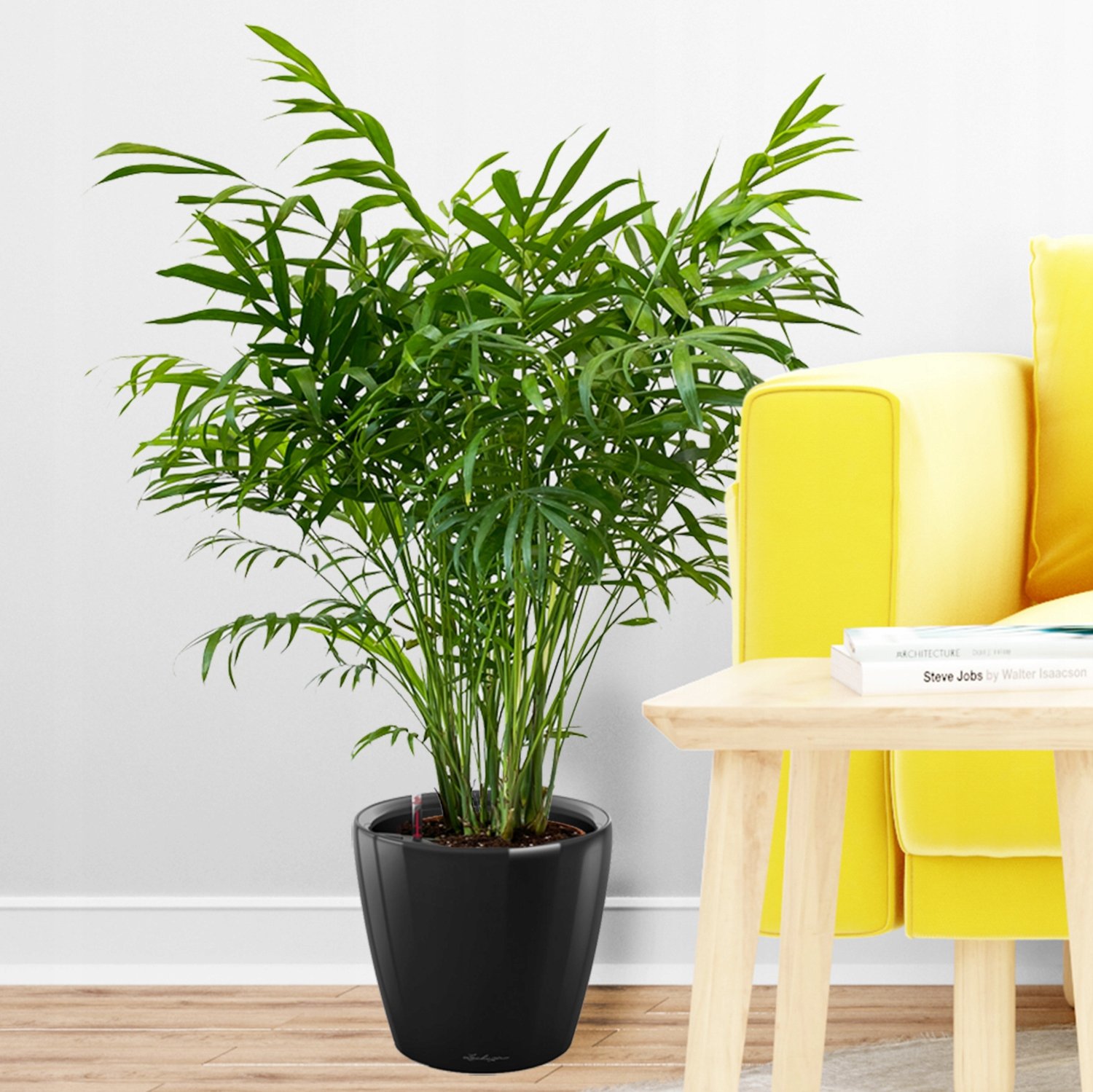
Plant care
Caring for the chamedorea, despite its tropical origin, is quite simple and does not require much effort. However, to provide the plant with optimal conditions and a long life, you should follow several recommendations:
- Lighting: Chamaedorea prefers a bright, diffused light place. Direct sunlight can cause burns on the leaves, so it is better to provide partial shade.
- Watering: Keep the soil moderately moist, but do not allow water to stagnate. Avoid both drying out and overwatering.
- Humidity: Since Chamaedorea loves high humidity, regularly spray the leaves with water and place the pot on a tray with wet gravel.
- Temperature conditions: The ideal temperature for chamedorea is from 18 to 25°C. Avoid sudden temperature changes and drafts.
- Fertilizer: During the period of active growth (spring-summer), feed the plant once a month with fertilizer for decorative foliage plants.
- Transfer: It is recommended to replant young plants annually, adults - every 2-3 years. Use light, draining soil.
- Trimming: To maintain a neat appearance, regularly remove old or damaged leaves.
- Pest protection: Check the leaves for pests such as aphids or spider mites. Apply insecticides at the first sign of them.
Following these simple recommendations will help provide your chamedorea with comfortable conditions for growth and development, allowing you to enjoy its beauty for many years.
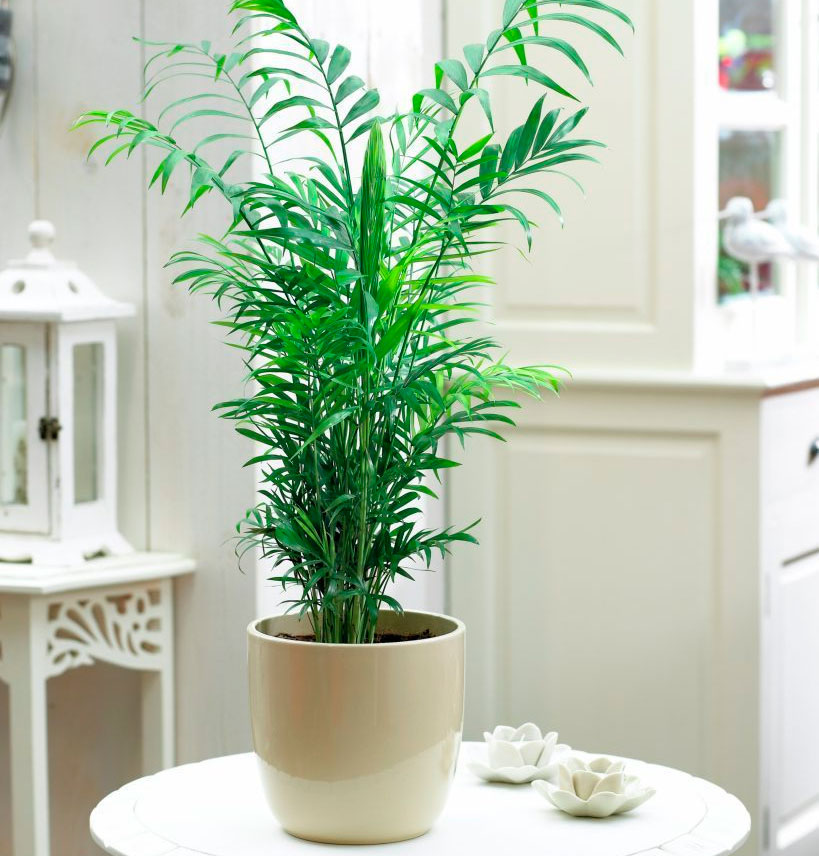
Variety of Chamaedorea species
Chamaedorea, thanks to its elegance and unpretentiousness in care, has gained popularity among lovers of indoor plants. But few people know that under this name there are many different species. Let's consider some of the diversity of chamaedorea species:
Ernest-August
- Appearance: A low palm tree with a group of thin trunks on which lanceolate leaves are located.
- Features: This species is distinguished by the presence of bright orange fruits that ripen inside a dense inflorescence.
- Maintenance conditions: Prefers warm and humid conditions, partial shade or diffused light.
"Elegance"
- Appearance: Multi-stemmed plant with graceful, feathery leaves.
- Features: It is one of the most popular types of chamedorea in interior decoration.
- Maintenance conditions: Loves bright but diffused light and regular watering.
Metallica
- Appearance: The leaves of this palm tree have a shiny, metallic hue, which is where its name comes from.
- Features: Most resistant to lack of light among other types of Chamaedorea.
- Growing conditions: Can thrive in partial shade, needs high humidity.
Monochrome
- Appearance: Slender, narrow green leaves.
- Features: It is a rare species of Chamaedorea, highly valued for its simplicity and elegance.
- Maintenance conditions: Prefers bright, diffused light, regular watering and moderate humidity.
Cascade
- Appearance: Graceful feathery leaves with long stems that form a cascade.
- Features: Often called "cataract palm" or "falling water" due to its unique appearance.
- Maintenance conditions: Requires bright but diffused light, moderate humidity and regular watering.
Each of these species has its own characteristics of appearance and care requirements. However, despite the diversity, all chamedoreas are united by a common requirement for humidity, love of diffused light and preference for warm conditions. The choice of one or another species depends on the individual preferences of the gardener and the conditions that he can provide for the plant.
Conclusion
Chamaedorea is a truly unique and multifaceted plant that has managed to win the hearts of many gardeners thanks to its elegance and unusual flowering. The diversity of its species allows everyone to find exactly the palm that will harmoniously fit into the interior of a home or office.
The main thing is to remember the rules of care and pay enough attention to the plant, and then it will delight the eye with its healthy appearance and perhaps even luxurious flowering.
We hope that our article has helped you get to know this magnificent plant better and has given you useful recommendations on how to care for it.

